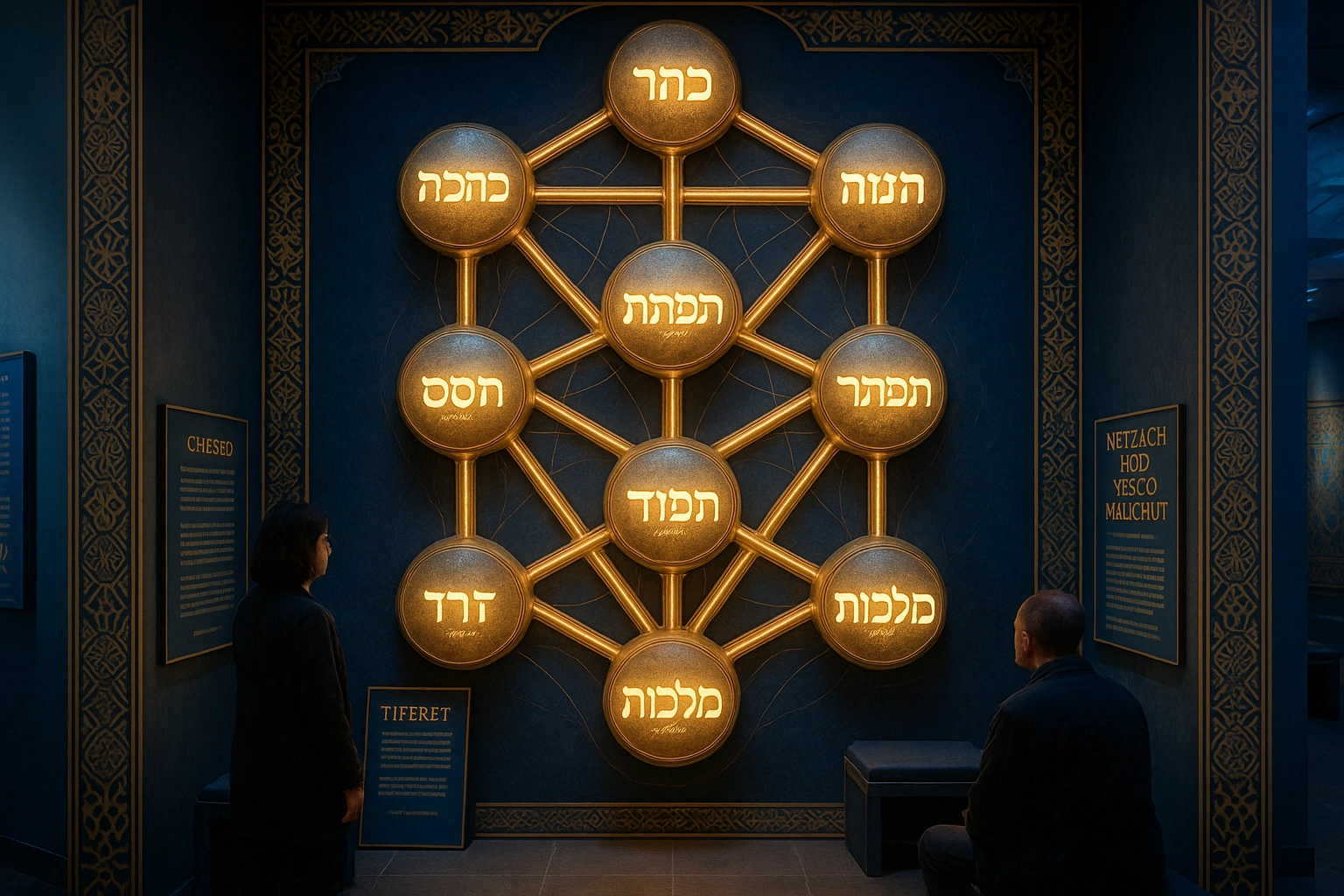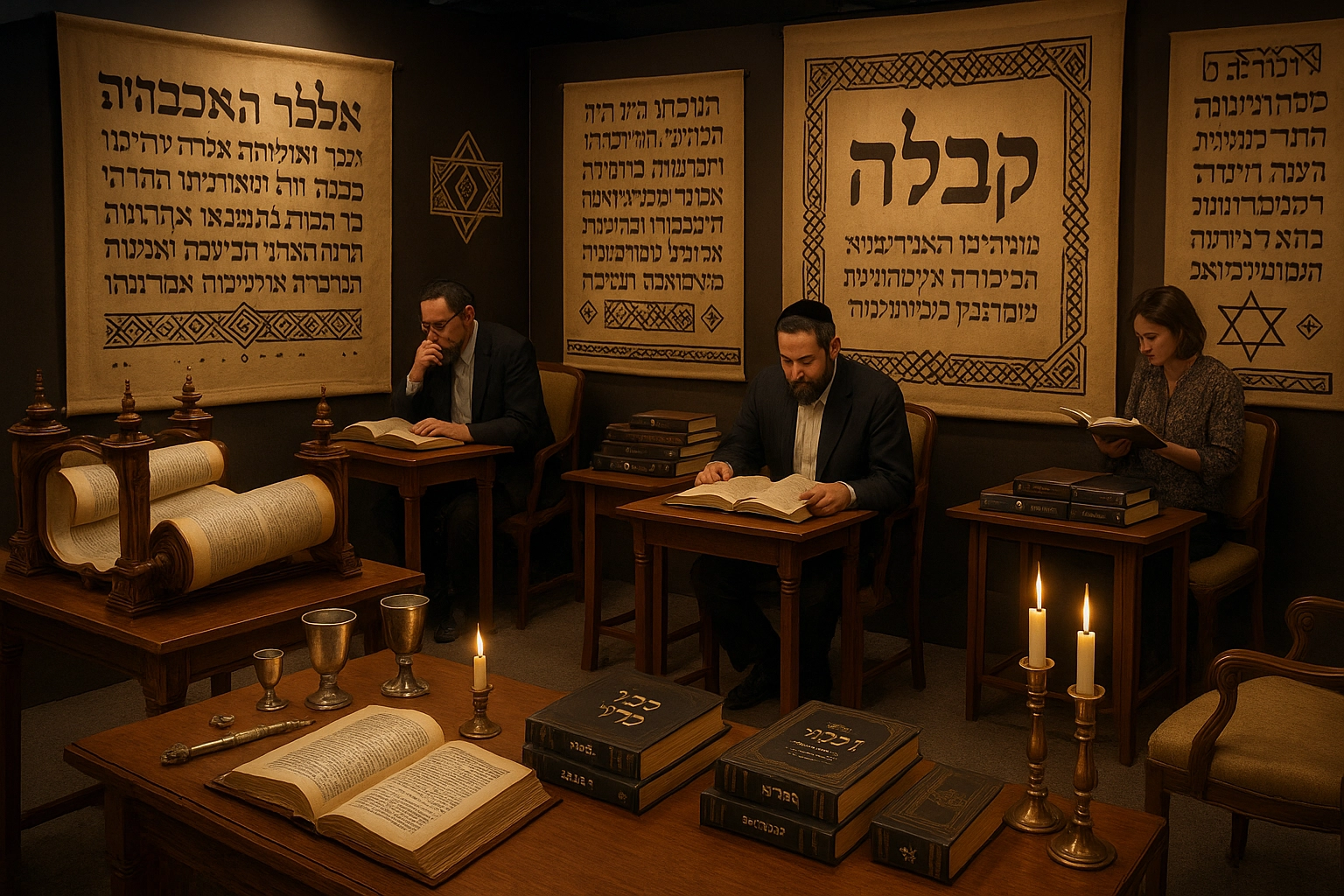Kabbalah (Jewish Mysticism) Exhibition
Discover the profound mystical wisdom and sacred teachings of Jewish Kabbalah through our immersive exhibition experience
Exhibition Layout & Experience

Exhibition Floor Plan
Interactive layout featuring study areas, meditation spaces, and sacred text displays
Main Exhibition Hall
Featuring Tree of Life displays, Hebrew letter installations, and mystical teachings

Sacred Study Space
Contemplative area symbolizing divine emanation and spiritual ascent
Historical Origin
Kabbalah is the esoteric, mystical tradition of Judaism, with roots dating back to early rabbinic texts and reaching maturity in medieval Provence and Spain. It flourished in the 16th century in Safed (Tzfat), northern Israel, under the guidance of visionary sages.
Emergence & Development
Medieval Kabbalah developed from earlier mystical traditions, integrating ancient texts and innovative practices. The Zohar became the foundational text. In the 16th century, Safed became the epicenter led by Rabbi Isaac Luria (the Ari), who revolutionized Kabbalistic thought with new doctrines.
Key Figures & Leaders
Rabbi Shimon bar Yochai
Legendary author of the Zohar and early mystical sage.
Rabbi Isaac Luria (the Ari)
Foremost Safed Kabbalist, founder of Lurianic Kabbalah.
Rabbi Moses Cordovero
Systematizer of Kabbalistic thought in Safed.
Core Concepts & Beliefs
Ein Sof
The boundless, unknowable aspect of God.
Sefirot
Ten divine attributes through which God interacts with creation.
Tzimtzum
The contraction of divine light, enabling creation.
Tikkun Olam
The mission to repair and elevate the world spiritually.
Fundamental Principles
Contemplative Study
Study of sacred texts for spiritual growth.
Ritual Practice
Ethical and ritual practice as tools for cosmic repair.
Personal Transformation
Growth through intention (kavanah) and meditation.
Balance
Harmony of loving-kindness and discipline in spiritual life.
Sacred Symbols
Tree of Life (Etz Chaim)
Diagram of the Sefirot and pathways of divine energy.
Hebrew Letters
Carriers of spiritual power and creative force.
Menorah
Seven-branched candelabrum, symbolizing divine illumination.
Major Rituals & Ceremonies
Torah Study
Mystical commentary study, especially the Zohar.
Kabbalistic Meditation
Recitation of divine names and mystical contemplation.
Tikkun Leil Shavuot
All-night study for spiritual repair and elevation.
Sabbath Observance
Holiday practices with mystical intentions and kavanah.
Global Influence & Cultural Impact
Global Influence
Kabbalah has profoundly shaped Jewish philosophy, ethics, and spirituality. Its universal themes of cosmic repair, unity, and mystical quest for divine connection resonate with seekers worldwide.
Cultural Impact
Kabbalah's ethical teachings inspire social justice and community engagement (Tikkun Olam). Its concepts have influenced Jewish art, music, literature, and ritual practices.
Geographical Spread
Kabbalah's heart is in Israel, especially Safed, Jerusalem, and Tel Aviv, with global study centers in the US, Europe, and beyond through synagogues and yeshivot.
Important Spiritual Books & Texts
Zohar (Book of Splendor)
Foundational Kabbalistic text
Etz Chaim (Tree of Life)
by Rabbi Chaim Vital
Pardes Rimonim
by Moses Cordovero
Associated Holy Places & Structures
Safed (Tzfat)
Center of Kabbalistic study and spiritual creativity.
Ari Synagogues (Safed)
Historic centers of mystical prayer and study.
Western Wall (Kotel)
Focal point for Jewish prayer and mystical meditation.
Cave of Machpelah
Site of patriarchs and matriarchs, source of spiritual merit.
Memorable Quote
"The whole of the Torah is for the purpose of promoting peace."— Rabbi Shimon bar Yochai, Zohar